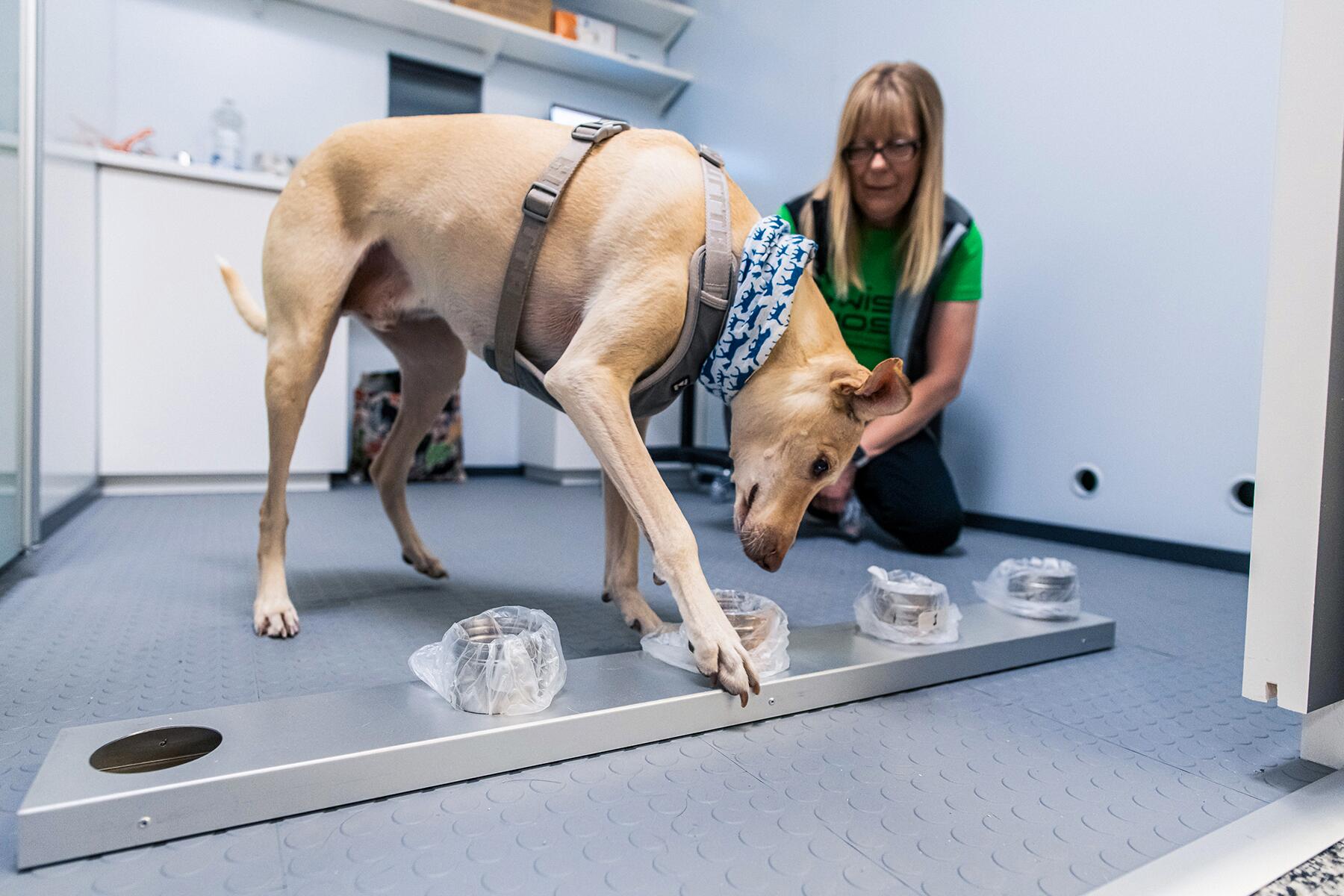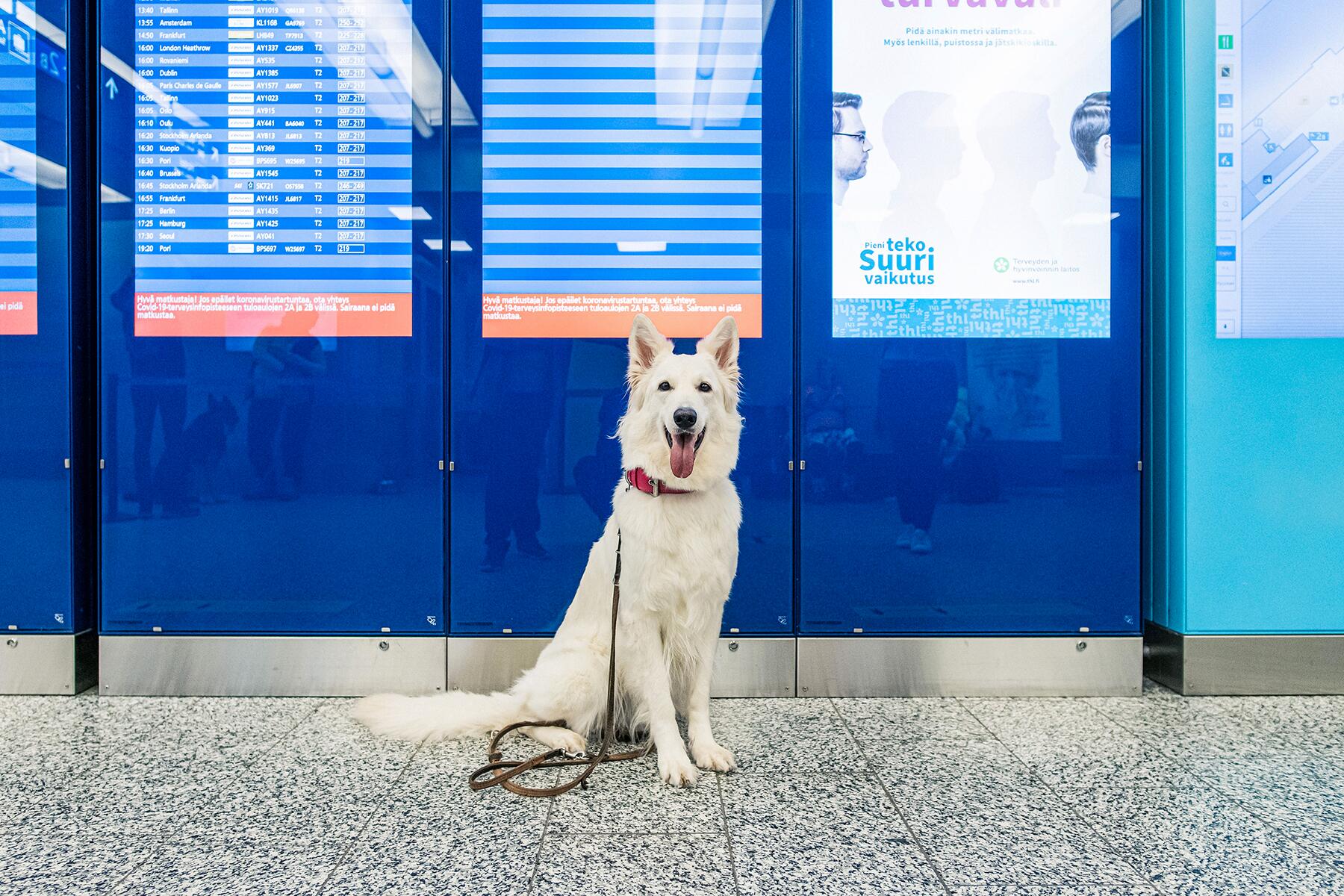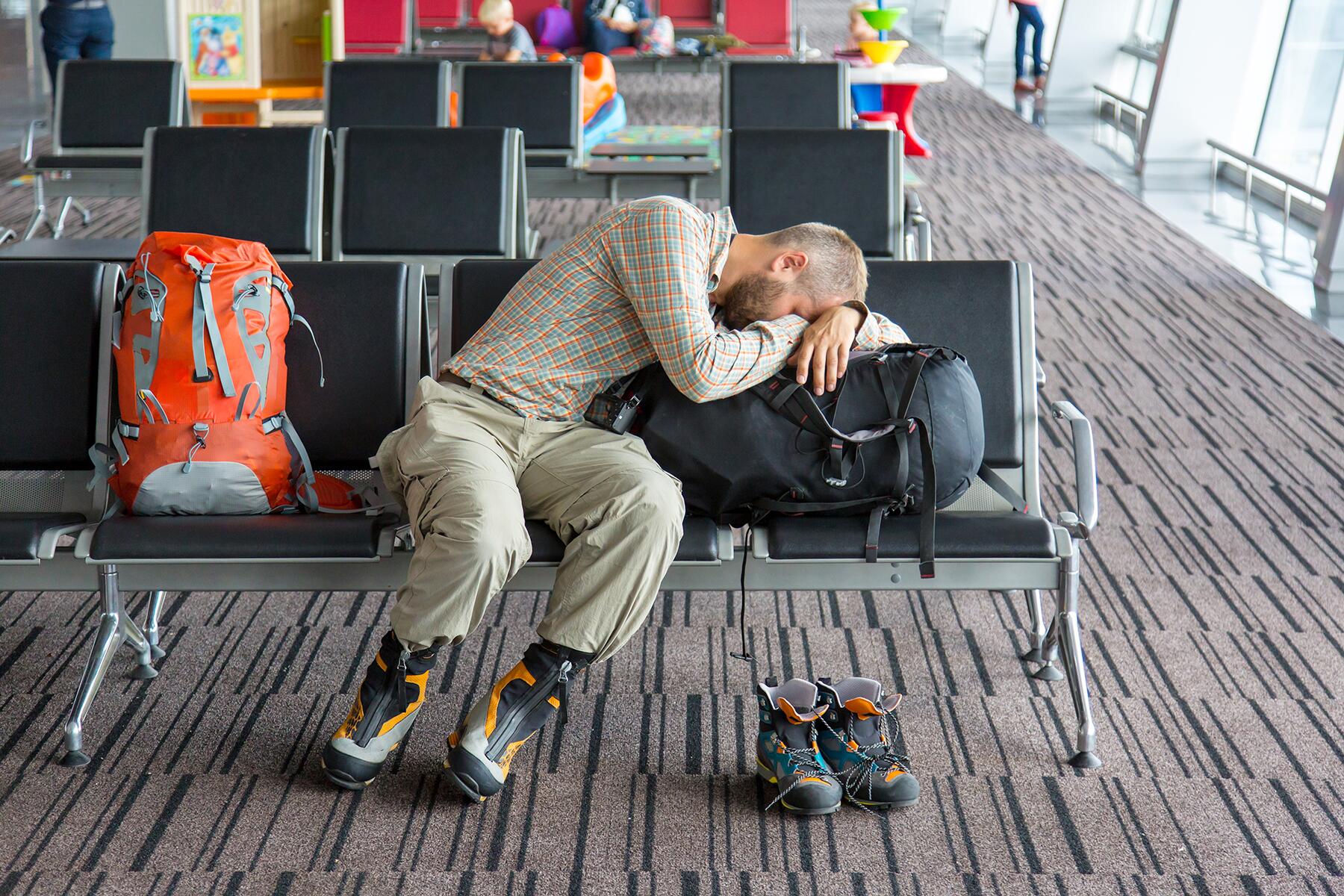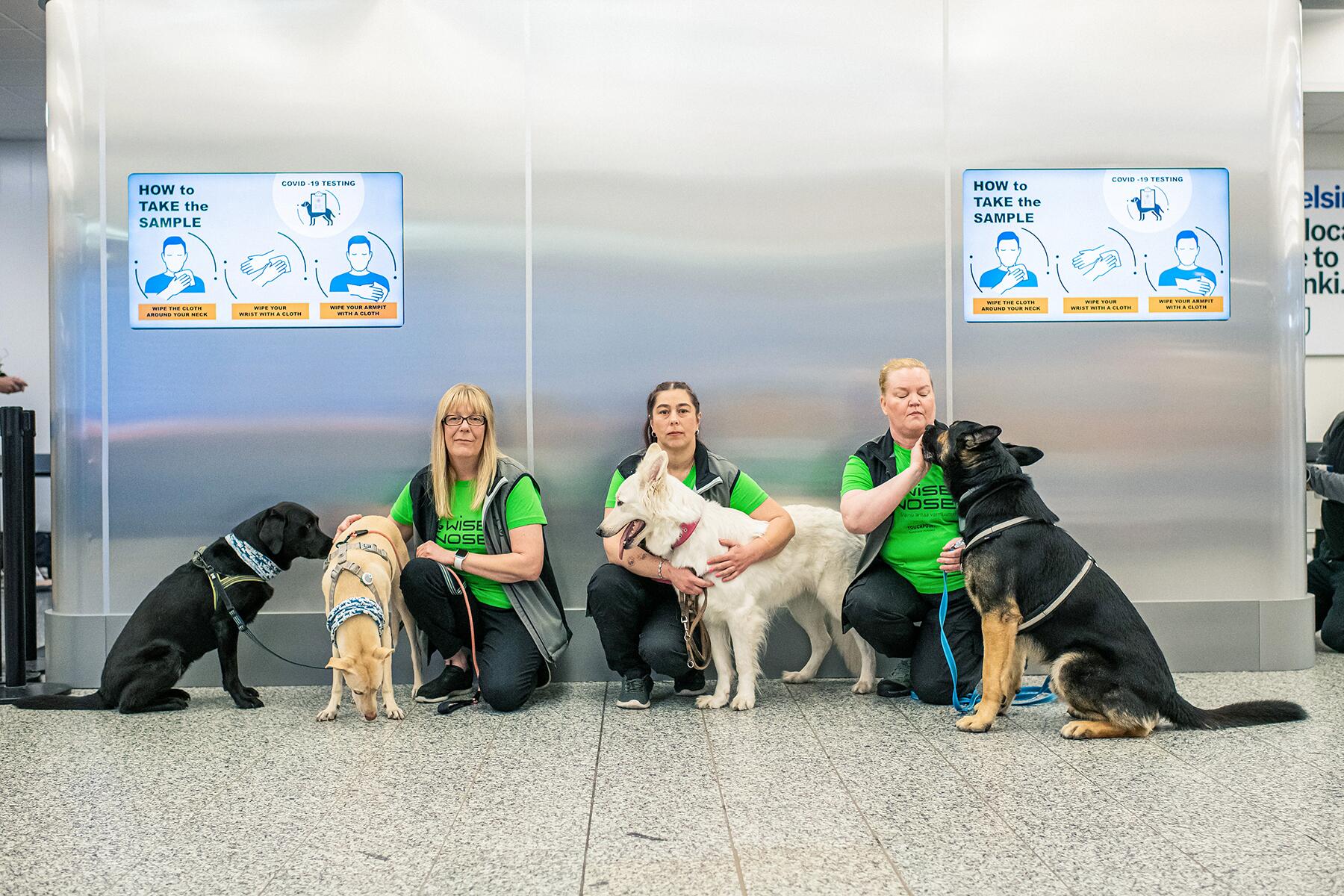If there is one thing we have learned to count on in the past year, it’s that lingering uncertainty is virtually a guarantee in travel these days. But perhaps four dogs in Helsinki can provide a brief respite from doubt.
After COVID-19 effectively shut down the entire world last March, travel continued, just with an added layer of stress. Measures were put in place, but they were confusing, ever-changing, and many of them, quite frankly, arbitrary. In order to travel over the last seven months to and from my adopted home in Paris, I have prepared foreign utility bills no one wanted to see and filled out contact tracing forms no one wanted to collect. Many countries require negative COVID tests for anyone without citizenship or just cause to enter—and rightly so. But getting them isn’t as simple as finding your nearest medical provider and offering up a nostril.
When a friend recently flew from Paris to Venice, and a negative COVID test taken within 72 hours of departure was required, she discovered most laboratories in central Paris were at capacity or couldn’t guarantee the results in time. With 16,000 new cases per day, that probably shouldn’t have come as a surprise. After exaggerating her possible exposure to the virus (I mean, surely we have all come in contact with it, especially in Paris where it’s business as usual) she received the test and her results, with less than 24 hours to spare. In the end, the Italian authorities didn’t even ask to see her paperwork. Still, as I’m someone who already worries (Will there be traffic? Will they call me out on my overweight carry-on? Will there be space in that very limited overhead compartment?) this is a lot of added pressure.
Top Picks for You
Recommended Fodor’s Video

Helsinki Airport in Finland—Finland being the country in which I was raised and a place where the COVID-19 pandemic has largely been contained since May—aims to take the anxiety out of an already stressful situation. How? Puppies and an abundance of information.
Before I landed in the Finnish capital, the passengers on my flight from Paris were told by the cabin crew that there would be free and voluntary COVID-19 testing in the area between arrival halls 2A and 2B. From this desk, we would also receive more information about necessary precautions and compulsory quarantining.
I didn’t even get that far before being supplied with a four-page document containing a map to the testing site, a comprehensive list of possible symptoms, and recommendations for how to proceed. I’d already installed Koronavilkku on my phone—an app downloaded by 2.2 million of my countrymen in its first week—that lets me know if I have come in contact with anyone who tested positive. As soon as I left customs, an airport employee was asking that I please don’t take public transportation after getting off the flight. It’s all so organized, consistent, and civil.
But where are the dogs?
The dogs—four pooches that have gained notoriety around the world since they made their debut at end of September—are specially trained canines who can detect anything from mold to internal diseases in mere seconds. The Helsinki Airport test site is a pilot project, overseen by the University of Helsinki, that uses dogs trained by Wise Nose, a company specializing in educating dogs in smell separation. The dogs in question have been trained to detect COVID-19—a skill some pick up in hours, others in a few months.
When I arrived at Helsinki Airport, the dog line had 10 people in it. At two minutes per person, the wait is less than half an hour. We all used that time taking turns asking the two volunteers questions about the dogs (the most I’ve ever heard Finnish strangers speak to each other in my entire life). How many hours do the dogs work per day? About two-and-a-half—but they decide and will inform you when they are done with their workday. Which dog is in the booth today? The dog on duty is called Miina, a seven-year-old Labrador retriever who has been doing this job for about six years. How many tests do they do at the airport per day? On average, about 100 people get sniffed.
The dogs—four pooches that have gained notoriety around the world since they made their debut at end of September—are specially trained canines who can detect anything from mold to internal diseases in mere seconds.
If Miina—or one of her three canine colleagues that work on rotation—thought you were COVID-positive, you would be immediately directed to the official testing site, a few feet away. But, standing there in line, I found myself mostly worried about a false negative. A volunteer told me that there have been, to date, no false negatives, but if I need certainty or an official document, I should take the lab test.
We chatted about what it would take to make the dog test official: a lot more results, more studies, official permits, and a new law. The dream is to have enough trained service dogs so that they could roam and detect positive results around the airport—not to mention the country.
And then it’s my turn. I entered a small booth where, behind a partition, sat the black lab and her handler. I opened up a package of swabs. There are five strips of gauze, with which I am to wipe my forehead, neck, armpit, the area around my mouth, and my wrist. The sweatier the better, apparently. I placed them all in a small metal container in front of me. This procedure ensures that the trainer is not exposed to the virus and anyone with an allergy is not exposed to the dog. Alas, no belly rubs.
The container is placed among other jars containing different scents, and it takes Miina just a few seconds to determine there is nothing of interest in my jar. If the results are positive, Miina will lay down, but after smelling my samples, she sat and looked at her handler with an expression that says, Am I a good dog? She got a treat and I got a paper saying Miina thinks I’m negative. You did good, Miina.

Still concerned, but also curious since I have never been through the detested nose swab, I decided to confirm her diagnosis with the official lab test. There were just three of us in line, so it didn’t seem like an inconvenience to either me or the system. We were to fill out a quick form so that the lab knew where to send the results and can enter us into a database for contact tracing. We were told the test results could take up to five days and that the lab test would not detect a virus contracted during the trip, so quarantine is always recommended.
Within a few minutes, I was sitting in front of a lab technician for what would be the longest five seconds of my life. I’d already counted to 500 by the time she started swirling that tiny mascara wand inside my sinus. But soon it was over, and about an hour after I landed, I left the airport having done not one, but two COVID-19 tests.
But here was the kicker: I was so used to the lingering worry caused by the pandemic that I was sure it would take five days for my official test results to arrive. By 5:30 a.m. the next morning, I’ve received a text message saying I was COVID-negative. I should have been relieved, but I guess I already knew. All it took was 30 seconds and a treat.



